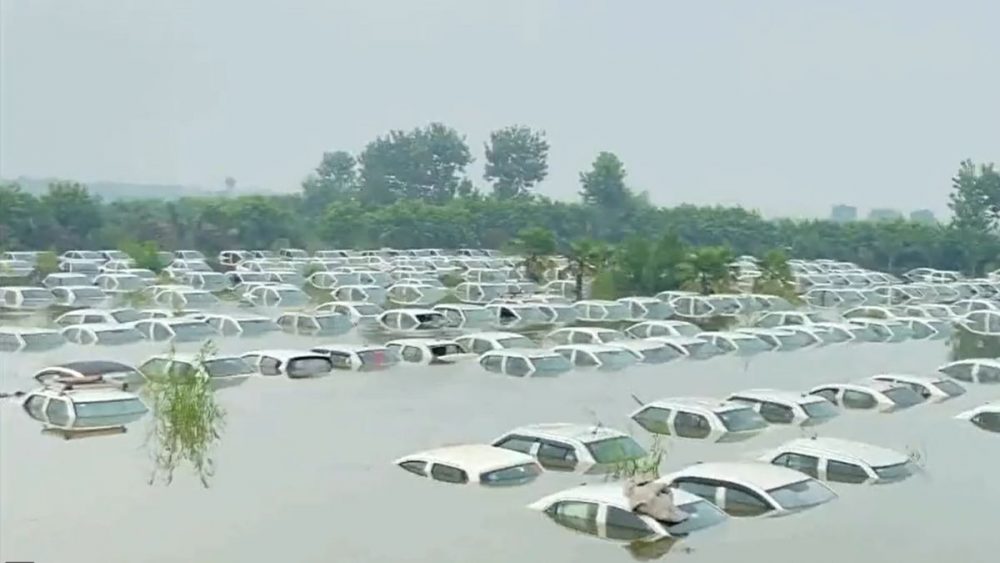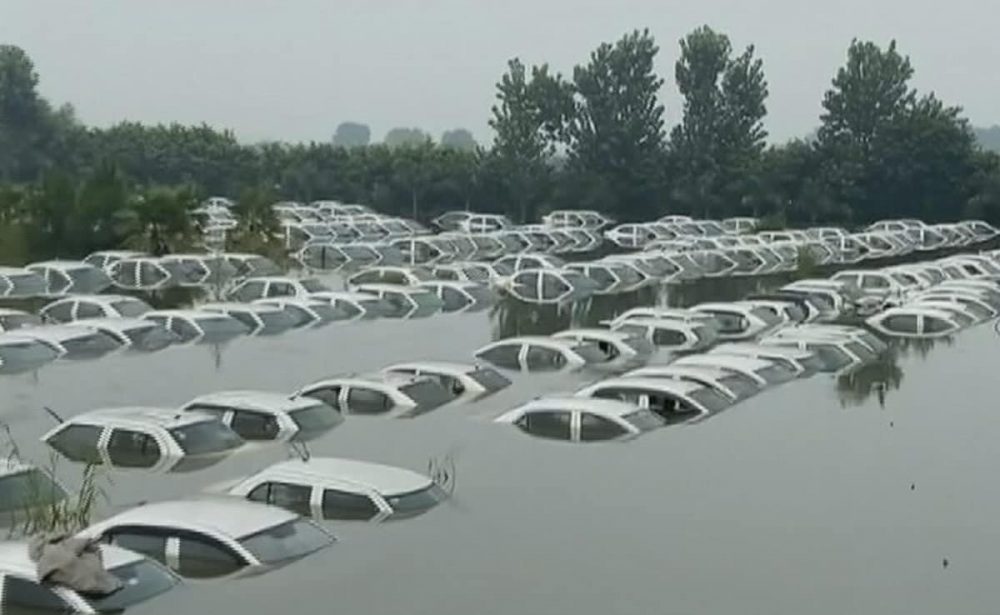Introduction
Car flooding is a serious concern, particularly in areas prone to heavy rainfall and swollen rivers. Recently, Noida witnessed a rise in the water level of the Hindon River, leading to the submergence of several vehicles and houses. This unfortunate incident highlights the importance of being aware of car flooding risks and taking necessary precautions to protect your vehicle. In this blog, we will delve into what car flooding is, the potential damages it can cause, and essential tips to safeguard your car during such natural disasters.

Understanding Car Flooding
Car flooding occurs when water levels rise to a point where it enters the vehicle’s interior, causing damage to vital components. During heavy rains and overflowing rivers, low-lying areas are particularly vulnerable to flooding, as evidenced in the recent incident in Noida. Floodwaters can seep into the engine, transmission, electrical systems, and other crucial parts of the car, resulting in extensive damage.
The Impacts of Car Flooding
When floodwaters inundate your vehicle, the consequences can be severe and costly. Here are some of the potential damages caused by car flooding:
Engine Damage: Water entering the engine can lead to hydrolock, where the engine seizes due to water blocking the piston’s movement. This can result in irreparable damage and require a costly replacement.
Electrical System Malfunction: Water can wreak havoc on your car’s electrical components, leading to short circuits and rendering various systems inoperable.
Interior Damage: The upholstery, carpets, and other interior components can suffer water damage, leading to foul odors, mold growth, and the need for extensive cleaning and repair.
Transmission Issues: Water can contaminate the transmission fluid, causing it to lose its lubricating properties and potentially damaging the transmission system.
Brake and Suspension Problems: Floodwaters can compromise the effectiveness of brakes and suspension systems, jeopardizing the overall safety of the vehicle.
Tips to Protect Your Car During Flooding
While it may be impossible to prevent natural disasters like flooding, you can take proactive measures to minimize the impact on your vehicle. Here are some essential tips:
Relocate Your Car: If you live in a flood-prone area, it’s crucial to park your car on higher ground or in a safe location away from potential floodwaters.
Elevate Electrical Components: Elevate the vehicle’s electrical components, such as the battery and fuse box, to higher positions to reduce the risk of water damage.
Avoid Starting a Flooded Car: If your car is already partially submerged, resist the urge to start the engine, as this can cause further damage.
Disconnect the Battery: In the event of flooding, disconnect the battery to prevent electrical system damage.
Purchase Flood Insurance: Consider investing in comprehensive car insurance that covers flood damage to safeguard your financial interests in such situations.
Act Quickly After Flooding: If your car has been exposed to floodwaters, seek professional assistance immediately. Do not attempt to start or drive the car without a thorough inspection and necessary repairs.

Government and Community Support
During severe flooding events, local authorities and community support play a vital role in mitigating the impact on people and their properties. In the Noida incident, the district administration and shelter homes provided aid to affected residents. It is essential to stay updated with official announcements and evacuate to safer locations if necessary.
Conclusion
Car flooding can be a devastating experience, both emotionally and financially. However, by understanding the risks and taking preventive measures, you can significantly reduce the chances of your vehicle falling victim to such disasters. Always prioritize your safety and the safety of your loved ones during natural calamities. Stay informed, take necessary precautions, and remember that seeking professional assistance is crucial in assessing and repairing any damage to your car after flooding.
Let us all be cautious and prepared to protect our vehicles and ourselves during such challenging times. Together, with community support and proactive measures, we can face the challenges of car flooding and emerge stronger.





